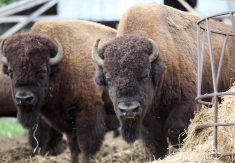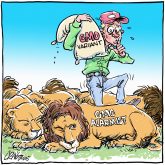Elaine Shein is Managing Editor of the Western Producer.
Saskatchewan can be deceiving. Depending on where you grow up, you believe the rest of the province looks the same way.
Until I was 17, when I made my first trip to Regina, my image of Saskatchewan was rolling hills covered with trees still being cleared for farmland, and dotted with lakes brimming with fish.
I was most familiar with a rich black or grey soil yielding everything from waving wheat to yellow canola, lush hay to carpets of tiger lilies.
Read Also

High prices see cow-calf producers rushing to incorporate
Farm accountants are reporting a steady stream of cow-calf producers rushing to get their operations incorporated ahead of selling their calves this fall.
I took for granted the abundant wildlife in the region. Deer, beavers and muskrats were seen almost daily; moose, elk, coyotes, foxes, porcupines and rabbits occasionally; and once in a while bears, cougars, badgers and other animals entered the territory.
I learned the call of the whooping crane, the color of herons, the dizzying height of sand cranes and the haunting cries of loons.
This was my home.
Nestled in the Thickwood Hills, 72 kilometres west of the Battlefords and 145 km northwest of Saskatoon, is Alticane.
While wildlife numbers in the countryside grew, the human population declined.
Current population: Six.
This weekend (July 4-5), a reunion is attracting more than 350 people to Alticane.
Anyone who has ever had anything to do with the hamlet is being welcomed to visit and reminisce before it is obliterated completely from maps and memories.
Like me, many of these people have moved away and discovered not all of Saskatchewan looks the same. We have journeyed varying distances, but we are still drawn back to a place that is close to our hearts.
I look forward to hearing stories and learning more about the small hamlet a half kilometre from our farm.
According to author E.T. Russell in What’s in a Name: The Story Behind Saskatchewan Place Names, “The first post office in the district was two miles southwest of the present town. It was run by Mr. McKye and he had named the post office Alticane, after his home town in Scotland.
“When the Canadian National came through in 1928 the post office moved into the town and gave it its name,” wrote Russell.
By the 1950s, Alticane had a school, blacksmith shop, hotel, hall, restaurants, several stores and gas stations, grain elevators and other places of business.
Twenty years later, it was struggling to survive. With less than a dozen people, many buildings were abandoned, the sidewalk was overgrown, elevators disappeared and eventually the post office/grocery store was the last place of business.
As I grew up, I grew to know and love the land around me. With my friends and brothers, we shopped in Alticane. We swiveled on high, round seats in the local cafe, we waited at the postal wicket for delivery of mail, bought groceries in the store, and a block away we bought our first driver’s licence.
We explored Alticane.
We crept into deserted buildings and the past came alive from faded yellow credit slips in the hotel, dusty theatre seats in the hall, tattered clothing left in empty stores and rusted antique tractors parked in the bush.
We explored the countryside. As far as our bikes could take us, we climbed and crawled into old farmyard houses and buildings. Old toys, calendars, school books and catalogues transported us to another era.
In 1998, few of these buildings remain. The post office that led to the town’s creation still attracts people regularly, but now they gather at a large, green compartmentalized mailbox.
While only six people live in Alticane, for at least this weekend the hamlet will remind many of us why it will always be home to hundreds more.














